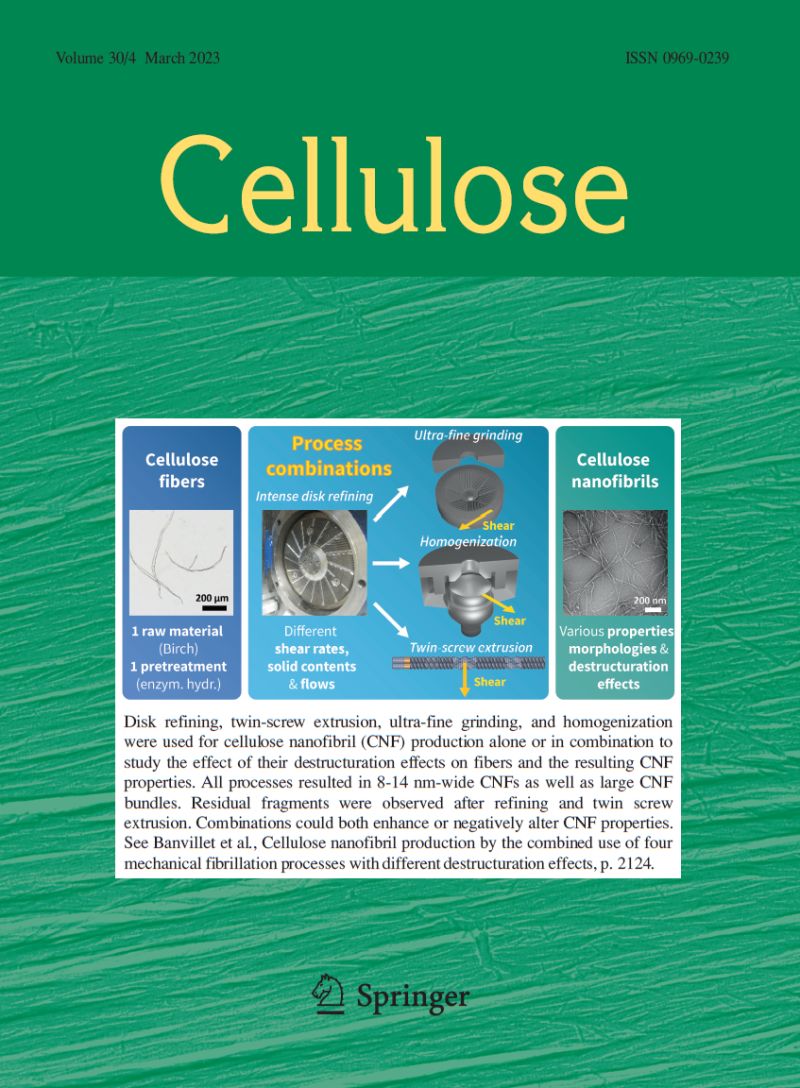软木牛皮纸蒸煮中残留碱度的影响
IF 4.9
2区 工程技术
Q1 MATERIALS SCIENCE, PAPER & WOOD
引用次数: 0
摘要
假设是,蒸煮后的残留碱过低会导致木质素在洗涤过程中重新沉淀,进而对随后的氧脱木质素阶段产生负面影响。为了验证这一假设,我们在实验室规模下进行了牛皮纸蒸煮,残碱水平从 5 克/升到 15 克/升不等,纸浆经水或 0.1 M NaOH 洗涤后进行氧脱木质素。结果表明,即使在低残碱和用水洗涤的情况下,洗涤后浆液中的 pH 值仍高于 11,足以使木质素保持在溶液中。残碱水平对氧脱木质素阶段的性能没有影响。本文章由计算机程序翻译,如有差异,请以英文原文为准。

Effect of residual alkali level in softwood kraft cooking
The hypothesis was that low residual alkali after cooking would cause lignin re-precipitation during washing and in turn affect the subsequent oxygen delignification stage negatively. To test the hypothesis, kraft cooks were performed in lab-scale to different residual alkali levels, ranging from 5 to 15 g/L and the pulps were subjected to washing with either water or 0.1 M NaOH and then oxygen delignified. The results show that even at low residual alkali and washing with water, the pH in the liquor after washing was above 11 which is sufficiently high to keep lignin in solution. No effect of residual alkali level was observed on the performance of the oxygen delignification stage.
求助全文
通过发布文献求助,成功后即可免费获取论文全文。
去求助
来源期刊

Cellulose
工程技术-材料科学:纺织
CiteScore
10.10
自引率
10.50%
发文量
580
审稿时长
3-8 weeks
期刊介绍:
Cellulose is an international journal devoted to the dissemination of research and scientific and technological progress in the field of cellulose and related naturally occurring polymers. The journal is concerned with the pure and applied science of cellulose and related materials, and also with the development of relevant new technologies. This includes the chemistry, biochemistry, physics and materials science of cellulose and its sources, including wood and other biomass resources, and their derivatives. Coverage extends to the conversion of these polymers and resources into manufactured goods, such as pulp, paper, textiles, and manufactured as well natural fibers, and to the chemistry of materials used in their processing. Cellulose publishes review articles, research papers, and technical notes.
 求助内容:
求助内容: 应助结果提醒方式:
应助结果提醒方式:


